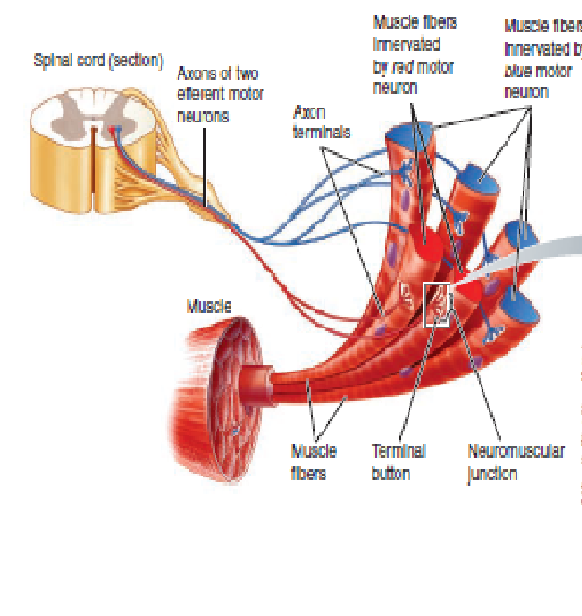
The Somatic Nervous System
Motor neurons, whose axons constitute the somatic nervous system, supply skeletal muscles and bring about movement (motor means “movement”). The cell bodies of almost all motor neurons are within the ventral horn of the spinal cord. The only exception is that the cell bodies of motor neurons supplying muscles in the head are in the brain stem. Unlike the two-neuron chain of autonomic nerve fibers, the axon of a motor neuron is continuous from its origin in the CNS to its ending on skeletal muscle. Motor-neuron axon terminals release ACh, which brings about excitation and contraction of the innervated muscle cells. Motor neurons can only stimulate skeletal muscles, in contrast to autonomic fibers, which can either stimulate or inhibit their effector organs. Inhibition of skeletal muscle activity can be accomplished only within the CNS through inhibitory synaptic input to the dendrites and cell bodies of the motor neurons supplying that particular muscle.
The somatic nervous system, contributes to homeostasis by stimulating the following activities: ■ Skeletal muscle contractions that enable the body to move in relation to the external environment, contributing to homeostasis by moving the body toward food or away from harm ■ Contractions that accomplish breathing to maintain appropriate levels of O2 and CO2 in the body ■ Shivering, which is important in maintaining body temperature In addition, efferent output to skeletal muscles accomplishes many movements that are not aimed at maintaining a stable internal environment but nevertheless enrich our lives and enable us to engage in activities that contribute to society, such as dancing, building bridges, or performing.surgery.
At the end of the lesson students will be able to learn;
1. Anatomy and Neurotransmitters of Somatic Nerve Fibers
2. Receptor Types
3.Neuromuscular Junction
4.Motor neuron
5. Motor Neuraons working as final common pathway
6. Influence of Specif Chemical Agents and Diseases


